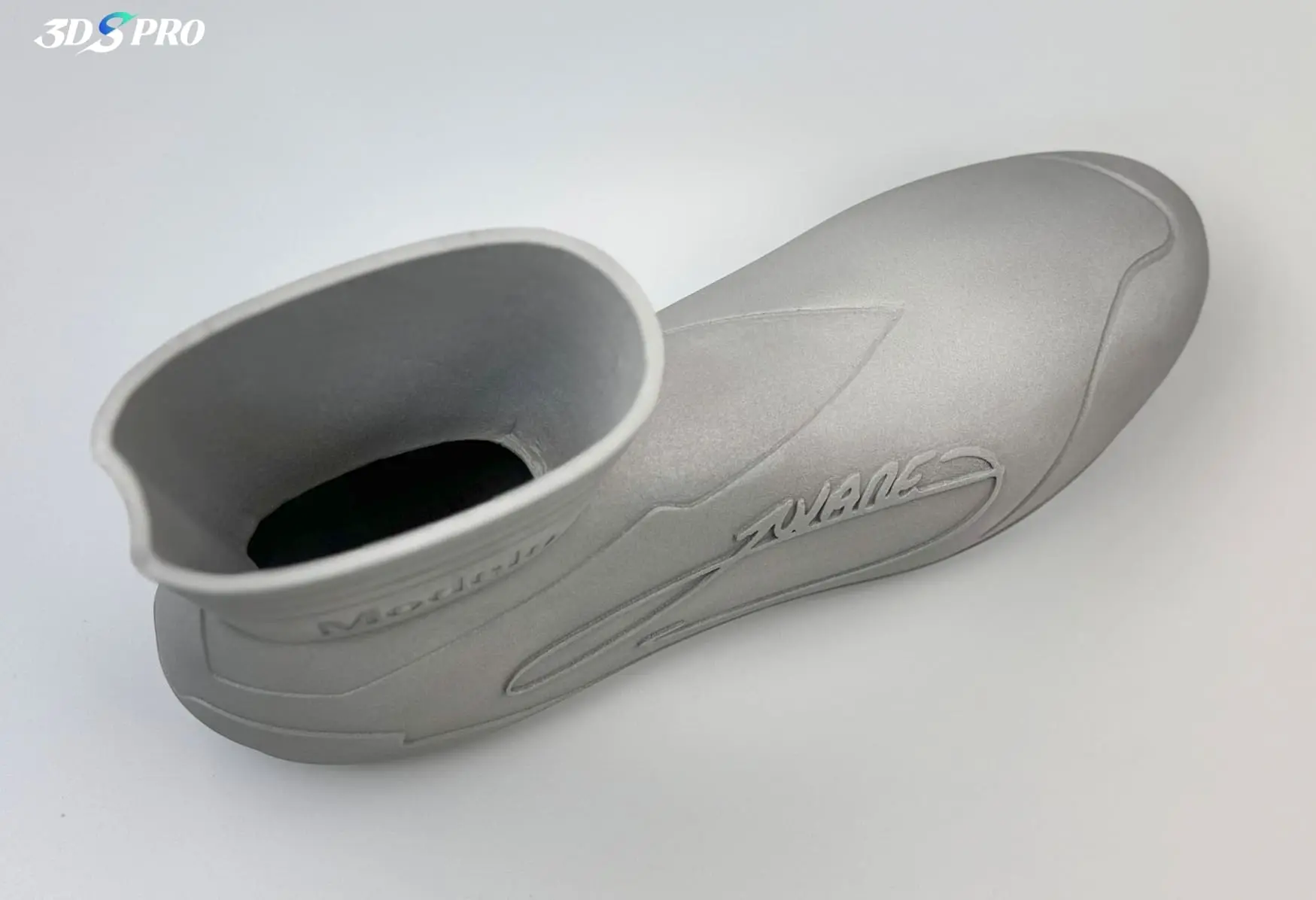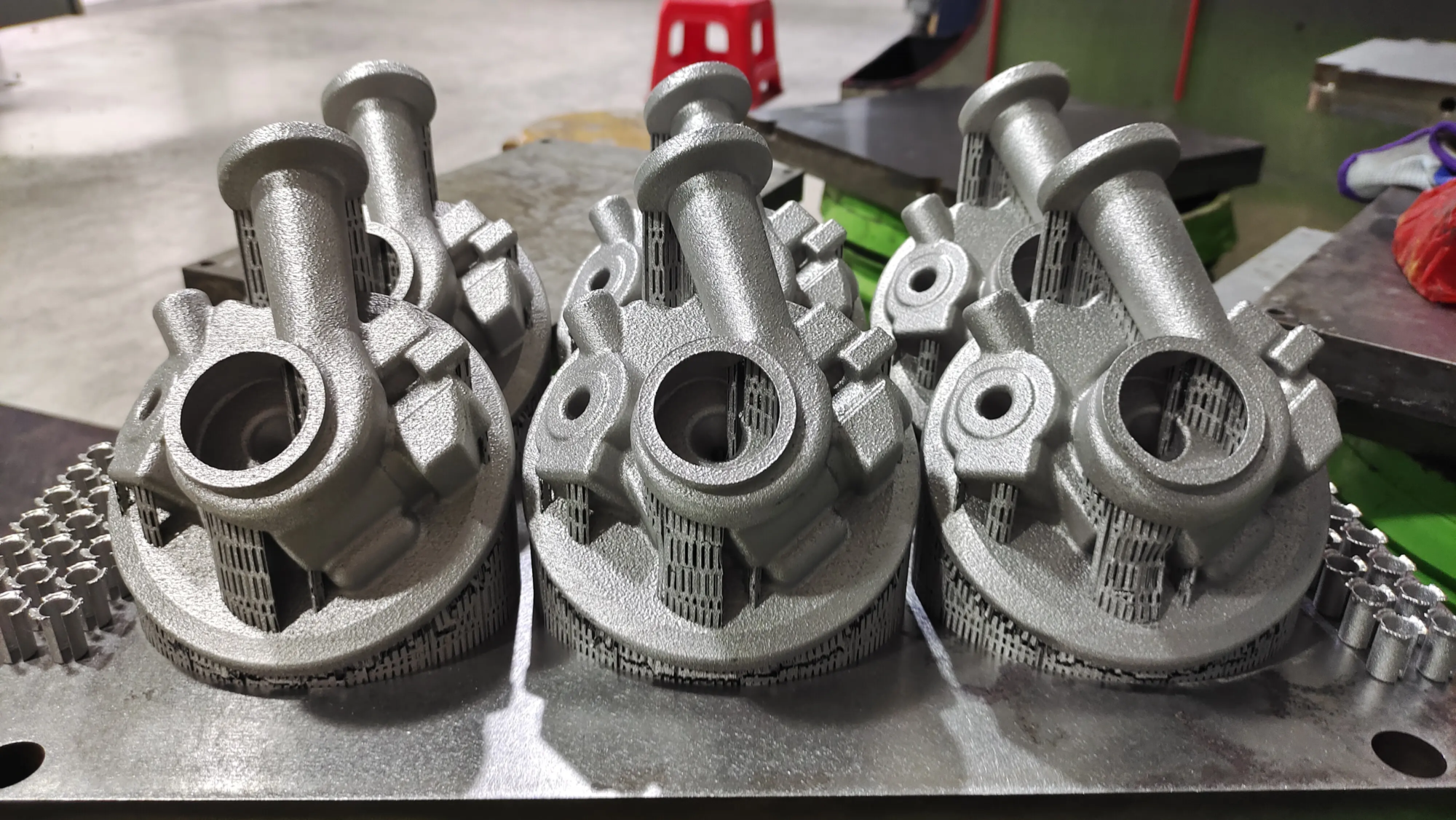3D printing enters daily life, and all this can start with a pair of shoes.
The thermoplastic polyurethane elastomer, known as TPU, also known as the thermoplastic polyurethane rubber, is a linear polymer with a N -type block structure (AB). It is well known for its excellent elasticity, its resistance to wear, its resistance to tear and its chemical resistance, and has been widely used in flexible components, shoes, medical equipment and car parts.
What is Shaw hardness?
Among the TPU materials to which everyone is exposed, many people can most often hear that TPU 95A is. But many people may not know what “a” really represents here. In fact, “A” refers to the shore a hardness of a material, a standard used to measure the hardness of a flexible material. The higher the value, the more difficult the material is and vice versa.
Currently, the most used 3D print equipment on the market is alsoTPU 95AIt is a harder elastomeric material, with a certain flexibility and excellent resistance to wear.
TPU range of hardness
TPU 60A – 85A: Very soft, suitable for mobile phone cases, shock absorption pads, etc.
TPU 90A – 95A: It has a certain hardness and is often used in the soles, industrial parts and other parts which require wear and support.
TPU 98A or more: close to the hardness of the plastic, more suited to high or structural load applications.
In addition to the common TPU 95A, more and more TPU materials with different hardness and functions have appeared on the market today, covering a wider range of application needs.
byEsun Easy to LiveFor example, flexible 3D printing materials include softer materials such as TPU-90A, TPU-87A, TPU-85A, TPE-83A, etc., and there are also models with higher hardness such as TPU-64D. In addition, there are variant materials with special properties, such as TPU-H (rapid antibacterial type), TPU-LW (light type) and TPU-TEMP color change (temperature color detection change type).
Recently, with the launch of double musel 3D printers such as Tuozhu H2D, the demand of rapid manufacturing users of soft and hard composite materials has increased considerably. Esun Yisheng also took the opportunity to launch three new flexible materials, namely TPU-90A, TPU-85A and TPU-64D, to meet the various market needs for multi-material printing.
What can TPU materials do?
One of the most representative applications is TPU’s implementation in the field of shoes.
Recently, Nike launched its first all-in-one sports shoe printed in 3D “Air Max 1000”, and the production partner behind him is Zellerfeld. As a pioneer in the field of 3D printed shoes, Zellerfeld also launched an open platform for 3D printed shoes in order to authorize creators, designers and brands to participate in the complete creative process from design to manufacturing.
It should be mentioned that the material used in this product is in fact TPU. Although models of specific materials have not yet been announced and are not excluded that they use personalized TPUs, this successful case undoubtedly proves that FDM technology is possible in the field of shoe manufacturing.
The flexible application potential is enormous, the DLP is ahead of FDM
In addition to shoe applications, 3D printing of flexible materials has great potential in many areas. existField of furniture at homeCan be used to print flexible support products such as head rest and rest at size, both comfort and sustainability;Medical rehabilitationIn terms of product, it is suitable for personalized orthotics, protective equipment and feet care products, with a strong fit and a more comfortable port;Industrial scenarioAmong them, it is often used to make soft parts such as joints, flexible connectors, anti-shocking pads, etc., which helps extend the life of the equipment and reduce maintenance costs. In addition, it can also be applied toProtective equipmentLike the lining of the helmet, shock absorption seals, etc., effectively improve the protection of user safety protection.
The above applications have in fact been successfully implemented in the 3D resin DLP printing process. It is understood that Boli technology has launched corresponding finished products in many areas mentioned above. However, in FDM technology, with the exception of the actual implementation of shoe products, other applications have not yet reached real mass production – at least from what we are currently knowing.
In the past, due to the small variety of TPU materials, many applications were difficult to perform thanks to FDM technology. From now on, manufacturers of materials, including Esun Yisheng, have launched a number of reliable TPUs, and the material problems are essentially resolved. The remaining main bottleneck is that the equipment, such as printing precision, multi-material stability and correspondence, must still be improved.
In the early stadiums, more equipment manufacturers must follow
However, just like Takuzu’s latest H2D device, significant improvements have been made to printing flexible materials. It is mainly reflected in separate feeding paths, mixing possibilities and exploration of applications (such as 3D printed shoes, seat cushions, etc.). If we want to further extend the application of TPU materials in various industries, in fact, more equipment manufacturers, including Chuangxiang 3D, must actively participate in order to jointly promote the development and popularization of flexible material printing technology.
Of course, for beginners, there are still certain technical obstacles to the use of TPU materials for 3D printing. Different TPU models have different requirements for printing parameters. Printing temperature, printing speed and extraction parameters must be reasonably adjusted to effectively avoid common problems such as plugs, wire drawing and poor connection between layers.
In short, the application of flexible materials such as TPU opened the door to large -scale markets such as shoes for 3D printing. The shoe market alone, a market of billions of billions, is enough to publish enormous development potential and commercial value.
So what do you think of making a pair of shoes thanks to 3D printing? Will it be a transformation in the way of manufacturing?
Or, are you ready to print your own pair of shoes? Welcome to share your experience in the comments section – Have you joked? Or unexpectedly at ease?
Finally, I joined a copy provided by Esun YishengPrecautions for printing flexible materialsHopefully, help users to master TPU printing skills more effectively, improve the printing success rate and finished product quality.
Equipment recommendations:
1. extrusion system
It is recommended to use a direct drive extruder (short -range extrusion). For TPU materials with hardness greater than 85A, the throat should not be too long and the extruded gears must have a strong bite capacity to prevent sliding or shock.
2. Specifications of the nozzle
It is recommended to use 0.4 mm or more nozzles to extrude the TPU material more easily and reduce the risk of blocking.
3. Print platform
It is recommended to use PEI or glass platforms. TPU materials have good adhesion to the base plate, and it is not necessary to adjust an excessively high base plate temperature, and it is generally maintained at room temperature at 50 ℃.
Settings parameters:
1. Print temperature
Recommended beach: 200 ℃ –250 ℃
– 64D, 95A: usually it is enough to use about 220 ℃, which can easily produce bubbles if it is too high
– 90A, 85A: The material is soft, it is recommended to adjust it to around 240 ℃ for easy extrusion
2. Traffic ratio
The recommended parameters are 1.0 to 1.05
The TPU itself has a relatively small amount of extrusion and the wall of the model is easy to sleep. The appropriate increase in flow can improve the link effect.
3. Disadvantage parameters
It is recommended to reduce or deactivate withdrawals. Frequent withdrawals can easily deform the material to the gears, thus blocking the material.
Other notes:
1. Materials drying
The TPU is highly hygroscopic, and it is recommended to dry carefully before printing (can be dried at 50-60 ° C for 4 hours) to avoid bubbles and surface defects.
2. Materials placement
For models with higher softness (like 83a and 85a), if the material is placed too far, the wire plate is easily blocked. It is recommended to optimize the placement of the material rack to keep the diet smoothly.





